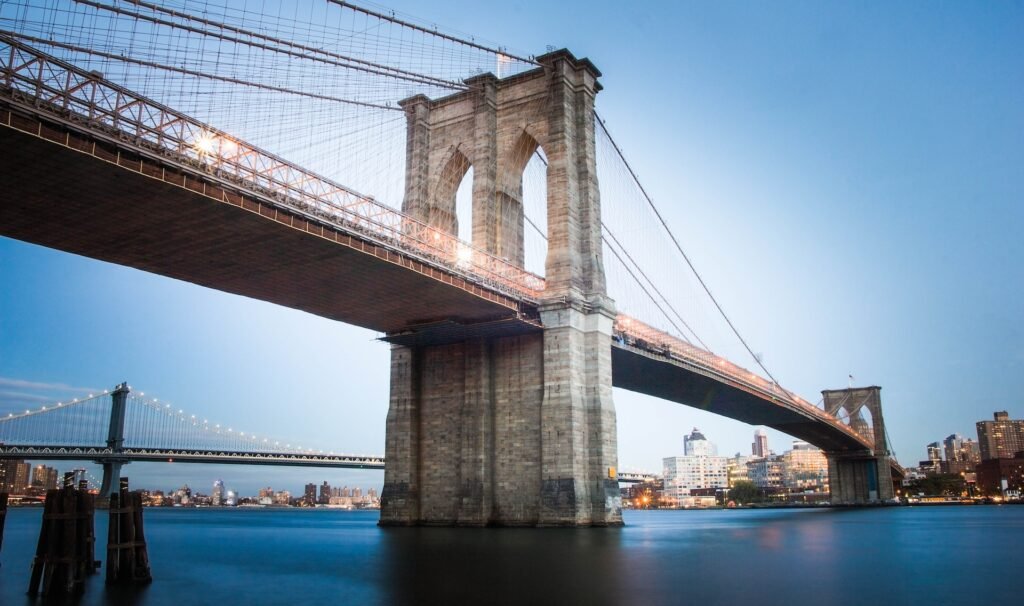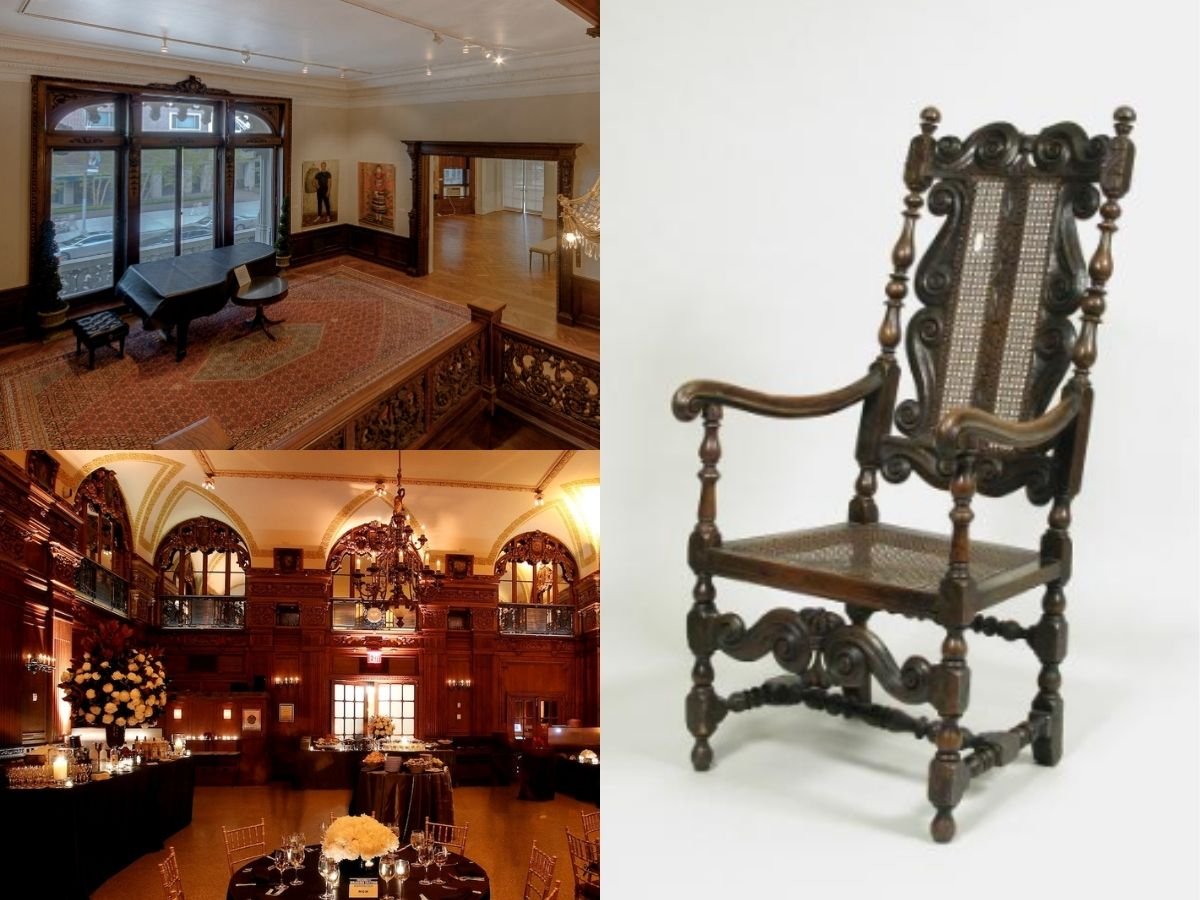A guide to New York City’s iconic bridges
New York City is known for its iconic landmarks and attractions, and among them are the 12 fascinating bridges that have played a significant role in shaping the city’s history and development. From the Yellow Bridge’s striking color and architectural design to the breathtaking views of the skyline from the Brooklyn Bridge, these bridges are more than just transportation links- they are essential parts of New York’s cultural and historical heritage.
Key takeaways:
- New York City is home to 12 iconic bridges, each with its unique features and history. These bridges have played a significant role in the development and growth of the city.
- The Yellow Bridge, also known as the Williamsburg Bridge, is one of the most intriguing bridges in New York. It is known for its striking color and architectural design, and it offers stunning views of the city skyline.
- Visitors can explore the bridges in various ways, such as taking guided tours, walking or biking across them, and visiting nearby parks and recreational areas. Each bridge offers a unique experience, and they are all worth exploring.
- The bridges in New York are not just important landmarks, but they also have significant historical and cultural value. They represent the engineering achievements of their time and the diverse communities that call New York City their home.
Introduction:
For centuries, bridges have been essential components of transportation networks, linking cities and communities across rivers, bays, and other waterways. In New York City, these bridges are not just practical structures, but they are also symbolic representations of the city’s growth and diversity. The 12 iconic bridges in New York offer not only essential connections but also fascinating experiences and stunning views. In this article, we’ll take a closer look at one of the most intriguing bridges in the city, the Yellow Bridge or Williamsburg Bridge, and explore the different ways visitors can explore and appreciate the unique features and history of these impressive structures. Whether you’re a history buff, an architecture enthusiast, or just looking for a scenic walk, New York’s bridges offer something for everyone.
The history and mysteries of the Yellow Bridge in New York.
The Yellow Bridge is a steel arch bridge located in New York City. It spans the East River, connecting the Lower East Side in Manhattan to Williamsburg in Brooklyn. The bridge was constructed in 1903 and has undergone several renovations and repairs since then. The bridge is known for its unique color, which appears to be yellow from a distance but is actually a shade of orange. The color was chosen to complement the nearby Williamsburg Bridge, which is blue.
The Yellow Bridge has a total length of 2,880 feet (878 meters) and a width of 85 feet (26 meters). It was designed by Henry Hornbostel, a prominent architect of the time. The bridge’s arch is a striking feature that distinguishes it from other bridges in the city. The arch rises 135 feet (41 meters) above the river and is made of steel that was riveted together. The bridge also has two main towers that support the arch and feature ornamental detailing.
Mysteries of the Yellow Bridge:
Despite being a prominent landmark in New York City, the Yellow Bridge has its own set of secrets that are less known to the public. Here are some of the most intriguing ones:
The Bridge was Almost Demolished: In the 1960s, there was a proposal to demolish the Yellow Bridge to make way for a new highway. However, the plan was eventually abandoned due to community opposition and preservation efforts.
The Bridge is a Filming Location: The Yellow Bridge has been featured in several movies, TV shows, and music videos. Notably, it was used as a filming location for the final scene of the movie “Gangs of New York.”
The Bridge Offers Stunning Views: While the Yellow Bridge is not as famous as other bridges in New York, it offers breathtaking views of the skyline and the East River. The best time to visit the bridge is during sunset, when the sky turns into shades of pink and orange.
Following 12 are the New York City’s most iconic bridges that are especially famous for their architectural and historical significance.
- Brooklyn Bridge:

The Brooklyn Bridge is perhaps the most iconic bridge in New York City, built in 1883, it is one of the oldest suspension bridges in the United States. The bridge connects Manhattan to Brooklyn and spans across the East River, offering stunning views of the city skyline. Its architecture is characterized by a combination of neo-Gothic and Renaissance styles. The bridge’s two stone towers are 276 feet tall and are connected by steel cables that support the roadway. The cables are anchored to the towers and buried deep in the bedrock on either side of the river.
Tourists visiting New York City can take a guided tour across the Brooklyn Bridge. One popular way to experience the bridge is to walk or bike across it. The pedestrian and bike paths offer panoramic views of the city skyline and the harbor. The bridge is also an ideal spot for photographers to capture breathtaking shots of the city. Additionally, visitors can explore the Brooklyn Bridge Park, located at the base of the bridge, which offers a variety of recreational activities and a chance to relax and enjoy the view.
- George Washington Bridge:

The George Washington Bridge is another iconic bridge in New York City. It spans across the Hudson River, connecting Fort Lee, New Jersey, to the Washington Heights neighborhood in Manhattan. The bridge is the world’s busiest motor vehicle bridge, carrying over 100 million vehicles per year. Its architecture is characterized by a steel suspension system and a massive tower, which stands 604 feet tall, making it one of the tallest structures in the New York City skyline.
Visitors can take a guided tour of the George Washington Bridge, which provides a unique perspective on the engineering and architecture of the bridge. The tour takes visitors to the top of the bridge, where they can enjoy breathtaking views of the Hudson River, New York City, and the surrounding area. The George Washington Bridge is also a popular destination for hikers and bikers, who can explore the trails and paths that run along the river on both sides of the bridge.
- Manhattan Bridge:

The Manhattan Bridge is another significant bridge in New York City, built in 1909, it spans across the East River, connecting Lower Manhattan to Brooklyn. Its architecture is characterized by a unique design that combines the suspension and truss bridge systems. The bridge’s two main towers are connected by diagonal cables that form a “X” shape. The bridge is 6,855 feet long and has a central span of 1,470 feet.
Visitors to New York City can take a guided tour across the Manhattan Bridge, which offers a unique perspective on the city skyline. The tour takes visitors through the bridge’s historic towers and along the pedestrian walkway, which offers panoramic views of the city. The Manhattan Bridge is also a popular destination for photographers, who can capture stunning shots of the city skyline and the bridge’s unique architecture.
- Verrazano-Narrows Bridge

The Verrazano-Narrows Bridge is a double-decker suspension bridge that connects the boroughs of Staten Island and Brooklyn. It was completed in 1964 and has a total length of 4,260 feet (1,298 meters), with a main span of 4,260 feet (1,298 meters). At the time of its construction, the Verrazano-Narrows Bridge was the longest suspension bridge in the world, and it held that title for 17 years. The bridge was named after the Italian explorer Giovanni da Verrazzano, who was the first European to enter New York Harbor in 1524.
The Verrazano-Narrows Bridge is known for its iconic design and stunning views of the New York Harbor. Visitors can take a guided tour of the bridge and learn about its history and construction, as well as the challenges that engineers and workers faced during its construction. The tour takes visitors to the top of one of the towers, where they can enjoy panoramic views of the city and the harbor.
- Williamsburg Bridge

The Williamsburg Bridge is a suspension bridge that connects the Lower East Side of Manhattan to the Williamsburg neighborhood in Brooklyn. It was completed in 1903 and was the longest suspension bridge in the world until the construction of the Bear Mountain Bridge in 1924. The bridge has a total length of 7,308 feet (2,227 meters), with a main span of 1,600 feet (488 meters).
The Williamsburg Bridge is known for its beautiful architecture and its history. Visitors can take a walking tour of the bridge and learn about its history and design, as well as the role it played in the development of the city. The tour also offers stunning views of the East River and the Manhattan skyline.
- Throgs Neck Bridge

The Throgs Neck Bridge is a suspension bridge that connects the Bronx and Queens over the East River. It was completed in 1961 and has a total length of 8,800 feet (2,682 meters), with a main span of 1,800 feet (549 meters). The bridge was designed to improve transportation between the Bronx and Queens and to reduce traffic on the nearby Whitestone Bridge.
The Throgs Neck Bridge is known for its stunning views of the East River and the city skyline. Visitors can take a guided tour of the bridge and learn about its history and construction, as well as the challenges that engineers and workers faced during its construction. The tour also offers views of the Bronx, Queens, and Long Island.
- Kosciuszko Bridge

The Kosciuszko Bridge is a cable-stayed bridge that connects the boroughs of Brooklyn and Queens over Newtown Creek. It was completed in 2019 and has a total length of 3,029 feet (923 meters), with a main span of 1,100 feet (335 meters). The bridge was named after Tadeusz Kosciuszko, a Polish general who fought in the American Revolutionary War.
The Kosciuszko Bridge is known for its unique design and advanced engineering. Visitors can take a guided tour of the bridge and learn about its construction and design, as well as the challenges that engineers and workers faced during its construction. The tour also offers stunning views of the Newtown Creek and the city skyline.
- Bronx-Whitestone Bridge:

The Bronx-Whitestone Bridge is a suspension bridge that connects the Bronx to Queens. The bridge is an important part of the Interstate 678 highway system and has a total length of 2,300 meters. The bridge was opened in 1939 and was designed by the engineer Othmar Ammann.
The Bronx-Whitestone Bridge has a distinctive Art Deco style and features four imposing towers that rise 102 meters above the water. The bridge has a total of eight lanes and carries over 120,000 vehicles per day. The bridge also has a pedestrian walkway that provides a stunning view of the East River, the city skyline, and the nearby parks.
Visitors can take a guided tour of the Bronx-Whitestone Bridge that provides a unique insight into the history, design, and construction of the bridge. The tour includes a visit to the bridge’s maintenance facilities, the control tower, and the walkway. Visitors can also learn about the bridge’s role in the city’s transportation system and its significance as a cultural landmark.
- Triborough Bridge:

The Triborough Bridge is a complex of three bridges that connects Manhattan, the Bronx, and Queens. The bridge was opened in 1936 and was designed by Othmar Ammann and Aymar Embury II. The bridge has a total length of 3,200 meters and consists of three separate spans, each with its own unique design.
The main span of the bridge is a suspension bridge that connects Manhattan to Randall’s Island. The span is over 1,500 meters long and has a distinctive Art Deco style. The other two spans of the bridge are a truss bridge and a vertical lift bridge that connect Randall’s Island to Queens and the Bronx, respectively.
The Triborough Bridge is an important part of the city’s transportation system and is used by over 200,000 vehicles per day. The bridge also has a pedestrian and bicycle path that offers stunning views of the city skyline and the nearby parks.
- Wards Island Bridge:

The Wards Island Bridge is a pedestrian bridge that connects Manhattan to Wards Island. The bridge is a steel truss arch bridge that was opened in 1951 and has a total length of 1,127 meters.
The Wards Island Bridge is an important part of the city’s park system and provides access to some of the city’s most beautiful parks and recreational areas. The bridge also offers a stunning view of the East River and the city skyline.
Visitors can take a walk or a bike ride on the Wards Island Bridge and enjoy the beautiful scenery and the peaceful atmosphere of the nearby parks.
- Henry Hudson Bridge:

The Henry Hudson Bridge is a suspension bridge that connects Manhattan to the Bronx. The bridge was opened in 1936 and was designed by David B. Steinman. The bridge has a total length of 1,250 meters and features a distinctive Art Deco style.
The Henry Hudson Bridge is an important part of the city’s transportation system and is used by over 100,000 vehicles per day. The bridge also has a pedestrian and bicycle path that offers stunning views of the Hudson River and the city skyline.
- Queensboro Bridge

The Queensboro Bridge, also known as the 59th Street Bridge, is a cantilever bridge that spans the East River, connecting the boroughs of Manhattan and Queens in New York City. The bridge was opened to the public in 1909 and has since become one of the most recognizable landmarks of New York City.
The Queensboro Bridge is known for its distinctive design and unique features. It is a two-level bridge, with eight lanes of traffic on the upper level and a pedestrian walkway and bicycle path on the lower level. The bridge is 3,724 feet long and its towers rise 350 feet above the water.
The bridge was designed by engineer Gustav Lindenthal and architect Henry Hornbostel, who incorporated a number of decorative elements into the design, including ornamental lampposts, cornices, and balustrades. The bridge is also decorated with intricate ironwork and mosaics.
Visitors to the Queensboro Bridge can enjoy stunning views of the Manhattan skyline, including iconic landmarks like the Empire State Building and the United Nations building. The pedestrian walkway offers a unique vantage point from which to take in the city, and the bike path is a popular spot for cycling enthusiasts.
Conclusion:
In conclusion, New York City is home to 12 iconic bridges that have played a vital role in the development and growth of the city. Each of these bridges has a unique history and architecture that makes them an essential part of the New York City skyline. The Brooklyn Bridge, the George Washington Bridge, and the Manhattan Bridge are just a few of the notable bridges in the city, with their distinctive features and stunning views that attract tourists and locals alike.
The Yellow Bridge, with its striking arch and unique color, is a prominent landmark in the city that has its own set of secrets and mysteries. Despite being less famous than other bridges in New York, the Yellow Bridge offers breathtaking views of the skyline and the East River, making it a must-visit destination for anyone exploring the city.
Whether you’re a photographer looking for the perfect shot, a tourist seeking to explore the city’s architecture and history, or a local looking for a peaceful spot to relax and enjoy the view, these 12 bridges offer something for everyone. So if you’re ever in New York City, don’t forget to add a visit to one or more of these iconic bridges to your itinerary.

































